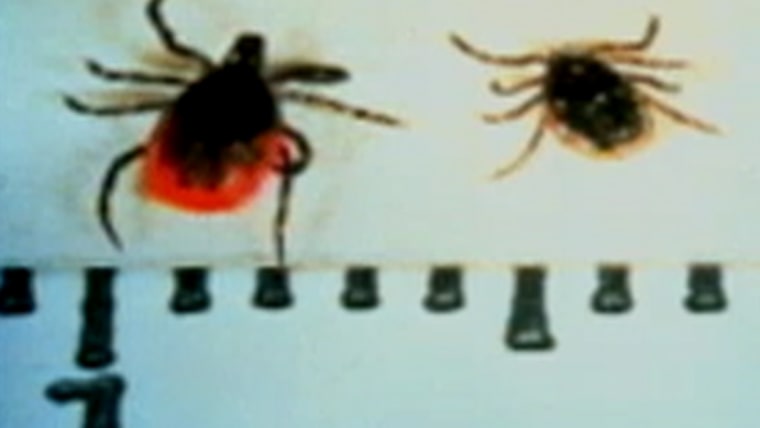Scientists are reporting on a new virus, never seen before anywhere, that apparently killed a Kansas man last year.
They’re calling it Bourbon virus, after the county in Kansas where the previously healthy man lived. He’d been bitten by ticks before he got sick so doctors believe the virus is carried by ticks.
“We were not looking for a new virus,” said Charles Hunt, Kansas state epidemiologist, who helped report on the new virus.
“We are surprised. We really don’t know much about this virus. It’s important to find out more from a public health perspective. It is possible that other persons have been infected with this and not known it?”
“It took months to find out this a novel virus that belonged to a genus of viruses called Thogotovirus."
The research team is not giving details on the man other than that he was healthy, under the age of 50 and working outdoors on his property in eastern Kansas last spring when he came inside with tick bites and one fat tick still on his shoulder.
A few days later, he developed nausea, diarrhea and felt weak. By the third day, he had fever, muscle aches and chills and went to the doctor, who prescribed an antibiotic called doxycycline which can treat several tick-borne infections, including one that causes Lyme disease.
But by the fourth day, the patient was drifting in and out of consciousness and was taken by ambulance to the hospital. He just got sicker, and blood tests cleared him of the usual tickborne illnesses such as Rocky Mountain spotted fever, Lyme disease, or ehrlichiosis.
His heart started to fail and then his kidneys, and he died 11 days after first becoming ill, the researchers report in the journal Emerging Infectious Diseases.
Doctors tested his blood for all sorts of infections, from tularemia and Q fever to fungal infections such as aspergillosis. The medical team finally decided to check for another new mystery virus called Heartland virus, another tickborne virus that had only turned up in 2011.
Hunt passed the samples along to the Centers for Disease Control and Prevention’s lab in Fort Collins, Colorado, which is looking for cases of Heartland virus.
Technicians there ran all sorts of tests that came back negative, says the CDC’s Dr. Erin Staples. CDC microbiologist Olga Kosoy noticed a virus growing on the patient’s blood sample. Her colleague Amy Lambert sequenced the virus’s genome using advanced molecular detection. It wasn't anything that had been seen before.
“It took months to find out this a novel virus that belonged to a genus of viruses called Thogotovirus,” Staples told NBC news.
“Thogotoviruses have been described throughout the world.” But they rarely cause human disease, and the closest relative to the virus ever seen in the U.S. was a sample found in a bird’s nest in Aransas Bay, off the coast of Texas.
Staples thinks the new virus may have occasionally infected people, but they never knew what they had. Scientists only recently have possessed the tools and facilities needed to make this kind of identification.
“I think it has probably been present for a while,” Staples said.
When the weather warms up, scientists will visit the area looking for ticks, mosquitoes and perhaps animals that might be carrying the virus. They may also take a look at the blood of people with illnesses that were never definitively diagnosed to see if they have antibodies to Bourbon virus.
“I think it has probably been present for a while."
In the meantime, people should not worry, but it does give people yet another reason to avoid ticks by wearing long sleeves and using insect repellant outside, Staples and Hunt both said.
The best-known is tickborne disease is Lyme disease, which infected about 30,000 people in the U.S. in 2010. Other infections include anaplasmosis and ehrlichiosis, which affect about 1,000 people each a year, and babesiosis, which infects about 1,100 people a year. Rocky Mountain Spotted Fever infects about 2,500 people a year.
As of March 2014, eight cases of Heartland virus disease have been identified among residents of Missouri and Tennessee, CDC says.
Heartland virus was first noticed in 2009 when two men in Missouri developed high fevers, diarrhea, fatigue and a severe drop in the number of their white blood cells, immune cells that fight infection. The symptoms are very similar to those caused by Bourbon virus in the Kansas man.
